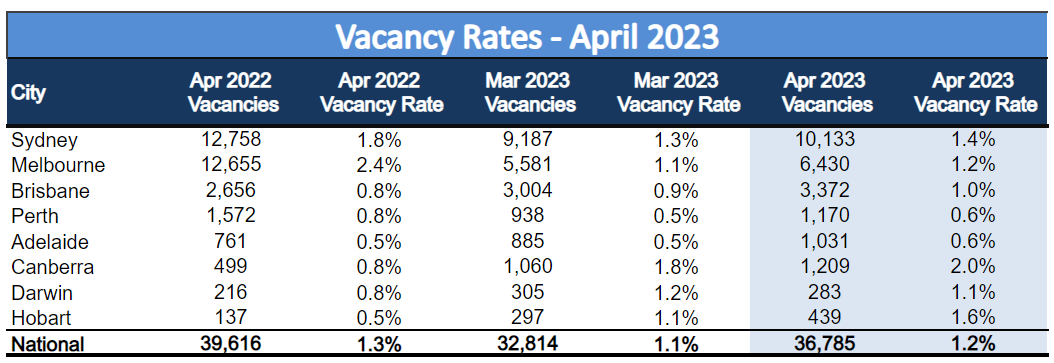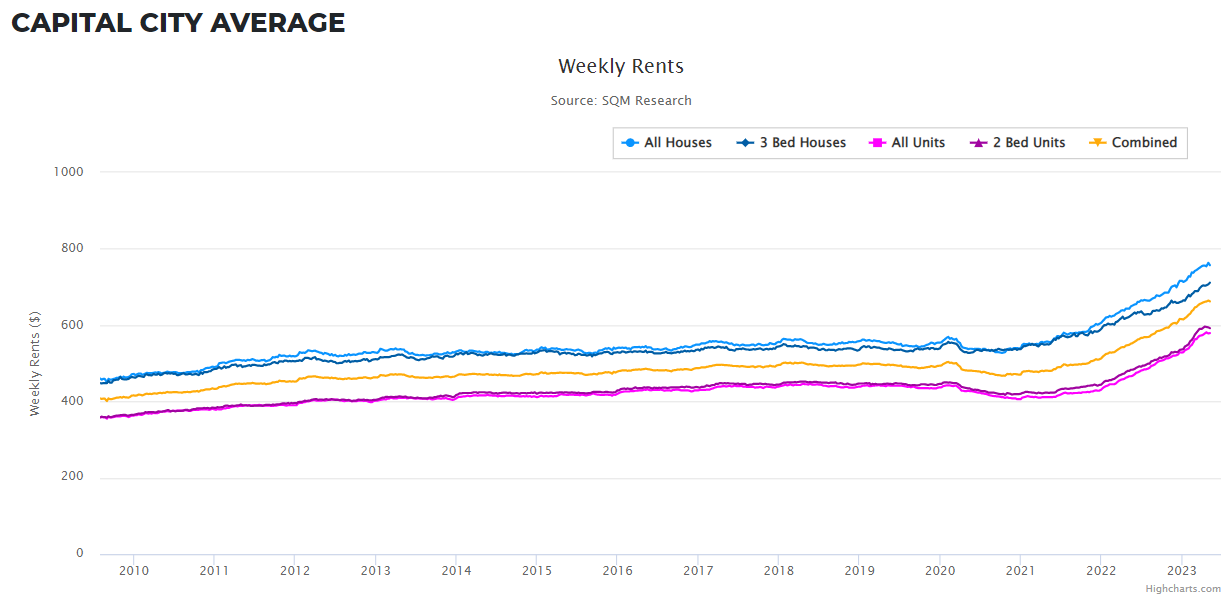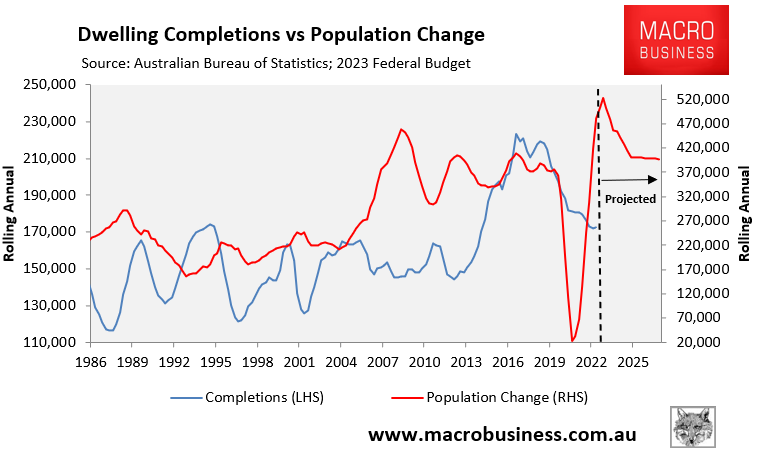Australia’s rental crisis has eased slightly on the back of an increase in group housing, according to new data released by SQM Research.
The national rental vacancy rate eased slightly to 1.2% in April, up 0.1% from March.
However, the vacancy rate was still 0.1% higher than the same time last year:

The monthly rise in the vacancy rate was broad-based, with all jurisdictions other than Darwin experiencing rises.
Commenting on the result, SQM Research managing director Louis Christopher believes that “tenants have been responding to the rental crisis by grouping together more, which can free up some rental stock”.
Christopher also believes the respite will be short-lived given record immigration flows into the larger capital cities while home building is constrained.
“The building slump, combined with extremely strong population growth rates will see to it there will remain an overall shortage of rental properties”, Christopher warned.
Meanwhile, SQM’s asking rents index continues to hyper-inflate, soaring by 5.1% over the quarter and by 20.7% year-on-year across the combined capital cities:

Last week’s federal budget forecast that Australia’s population would soar by 2.18 million people in the five years to 2026-27, with most of this growth occurring in Melbourne, Sydney and Brisbane:

That is the equivalent of adding five Canberra’s worth of population in just five years, or one Perth.
Meanwhile, this unprecedented population growth will occur at the same time as actual housing construction rates are falling:

There is only one outcome for the rental market: ongoing tightness, soaring rents and rising homelessness.
Australia will never build enough homes so long as its population grows like a science experiment through mass immigration.
Australia’s rental problem is really an excessive immigration problem.

